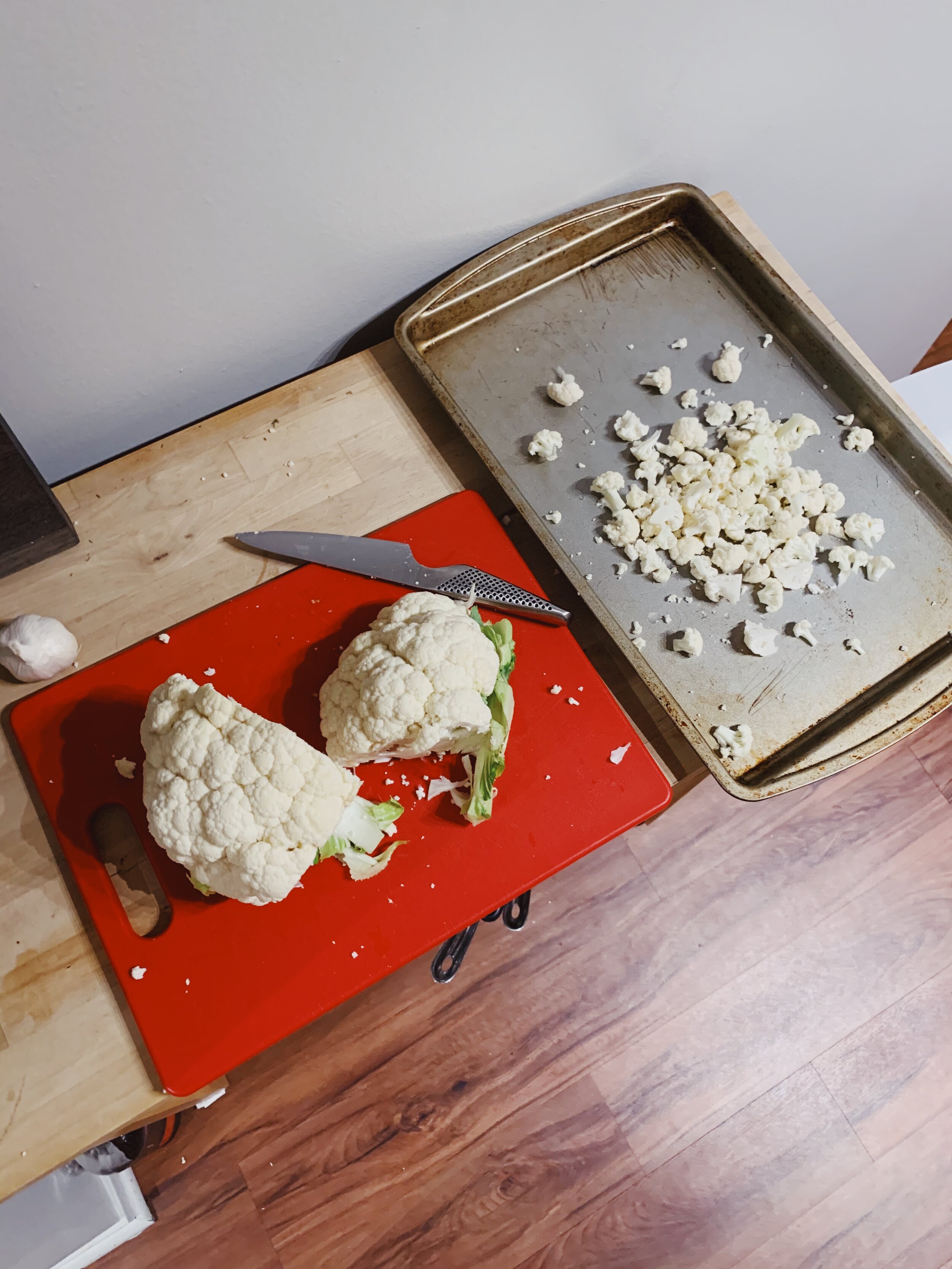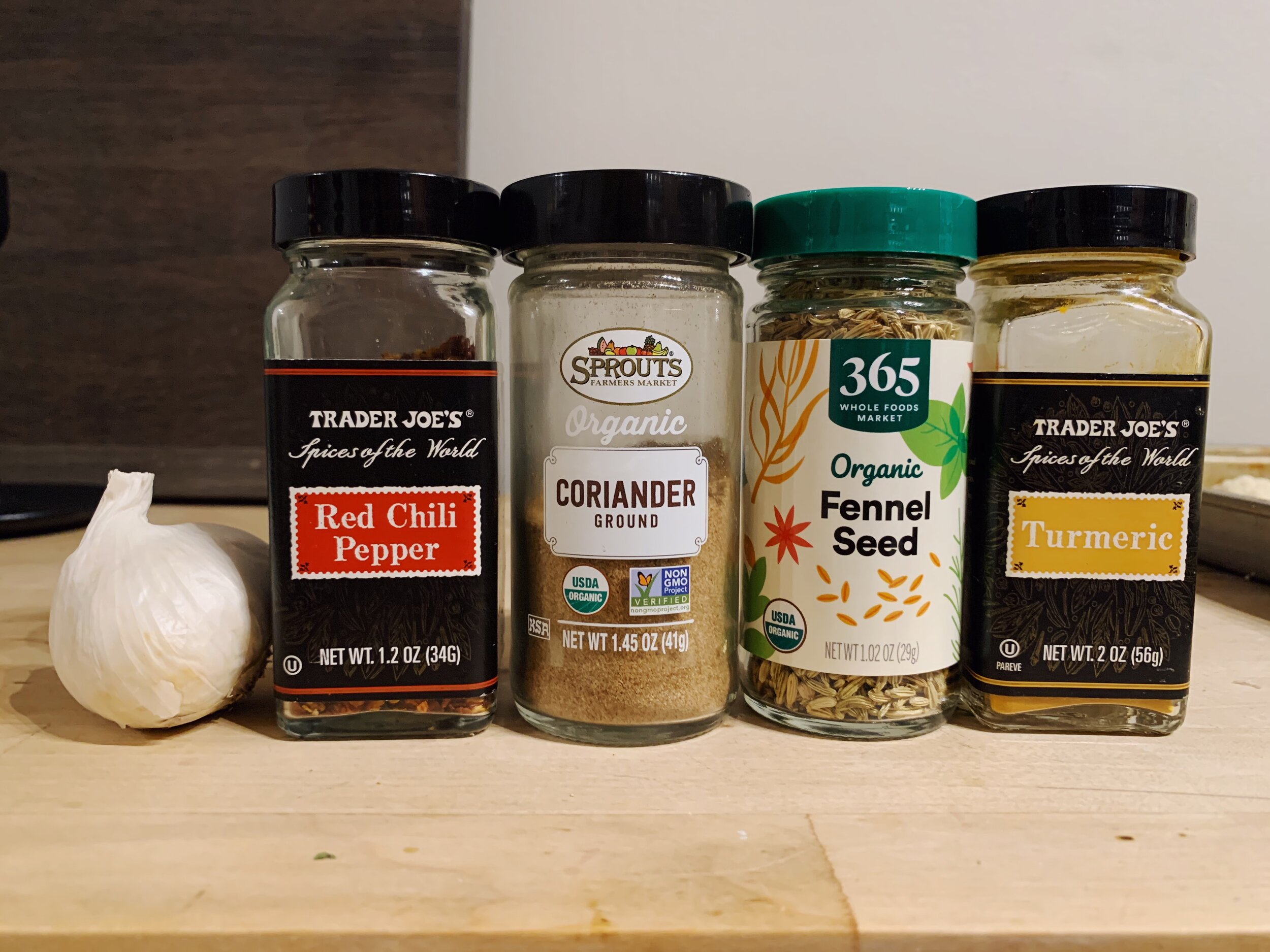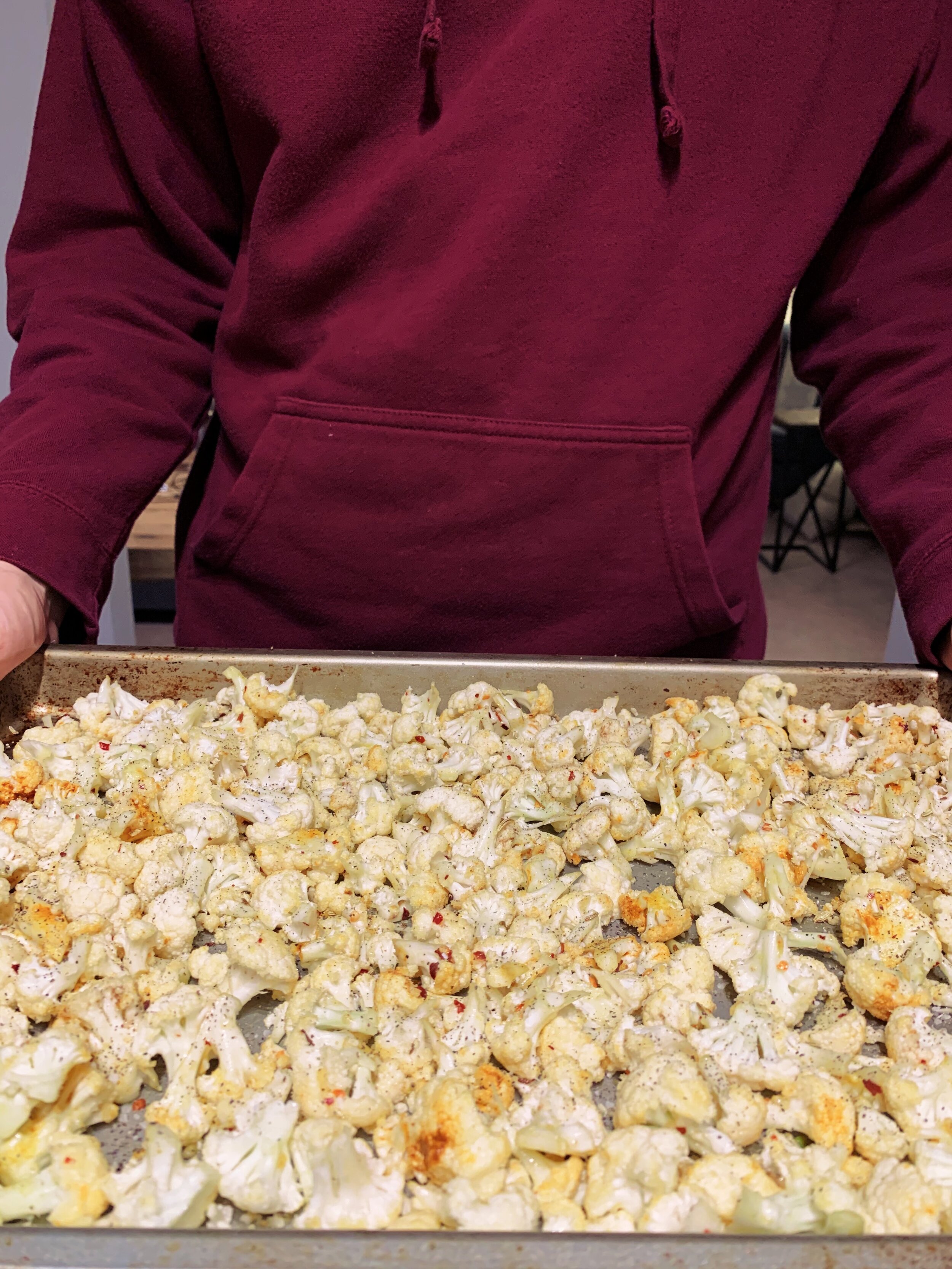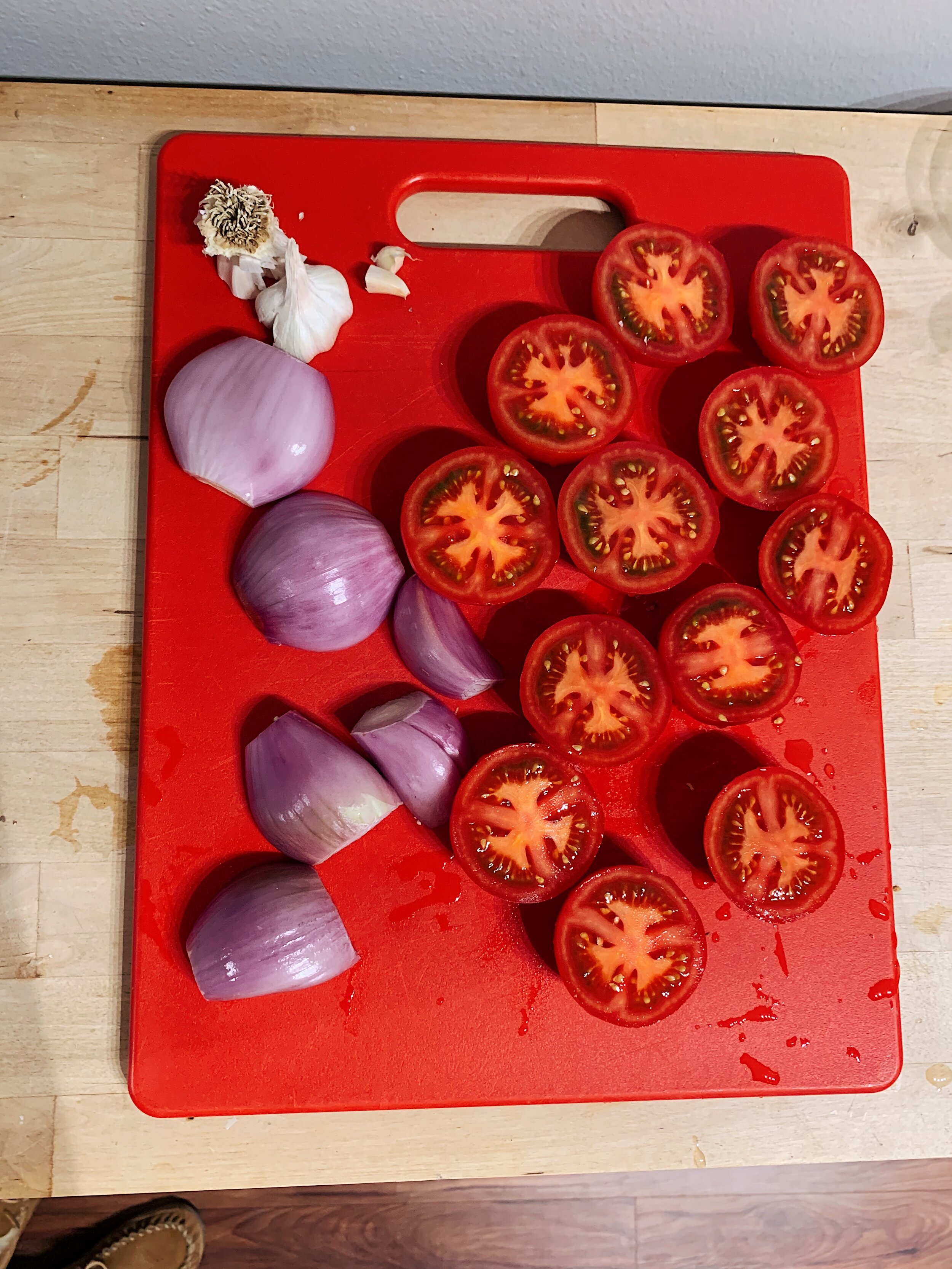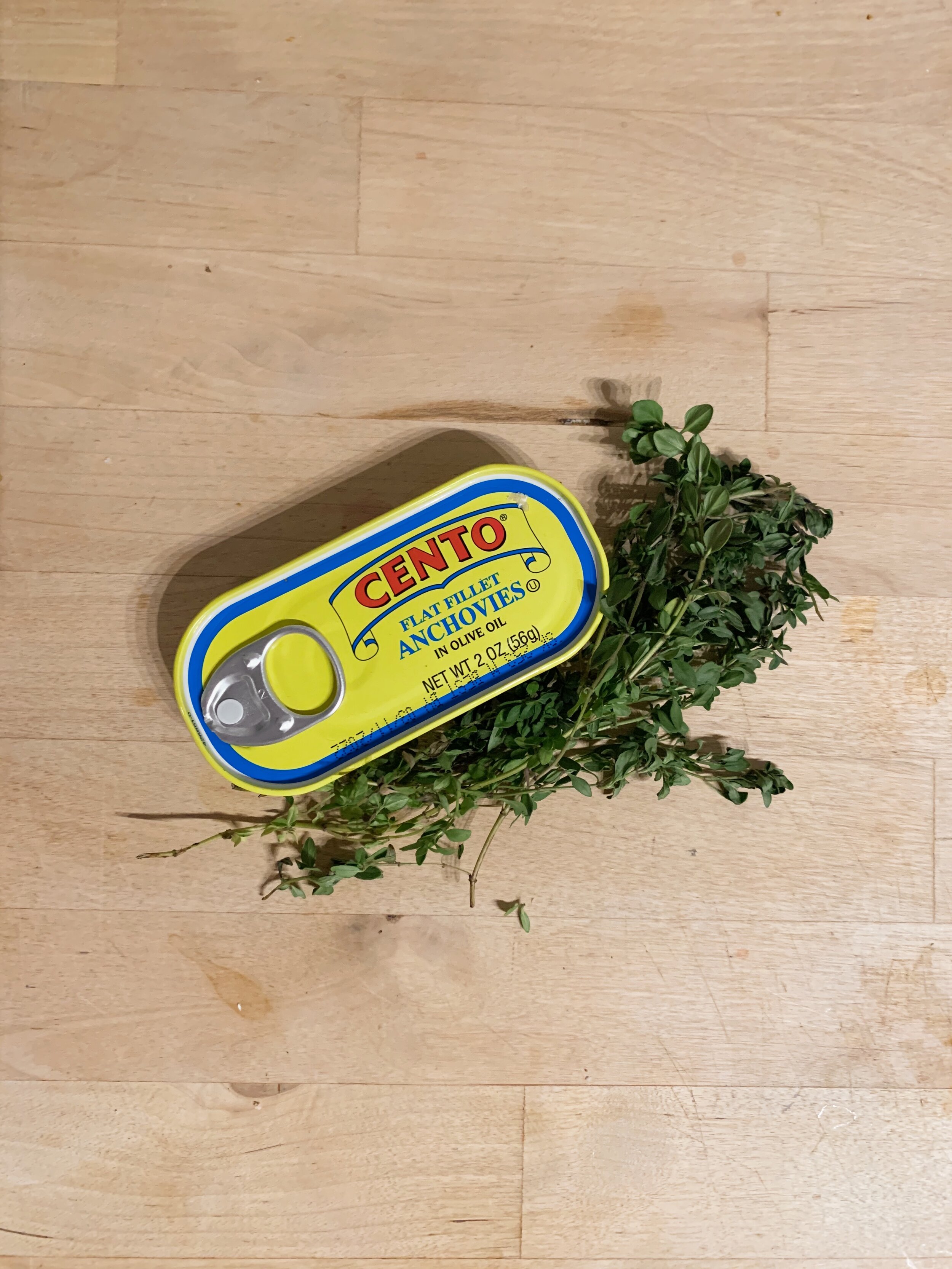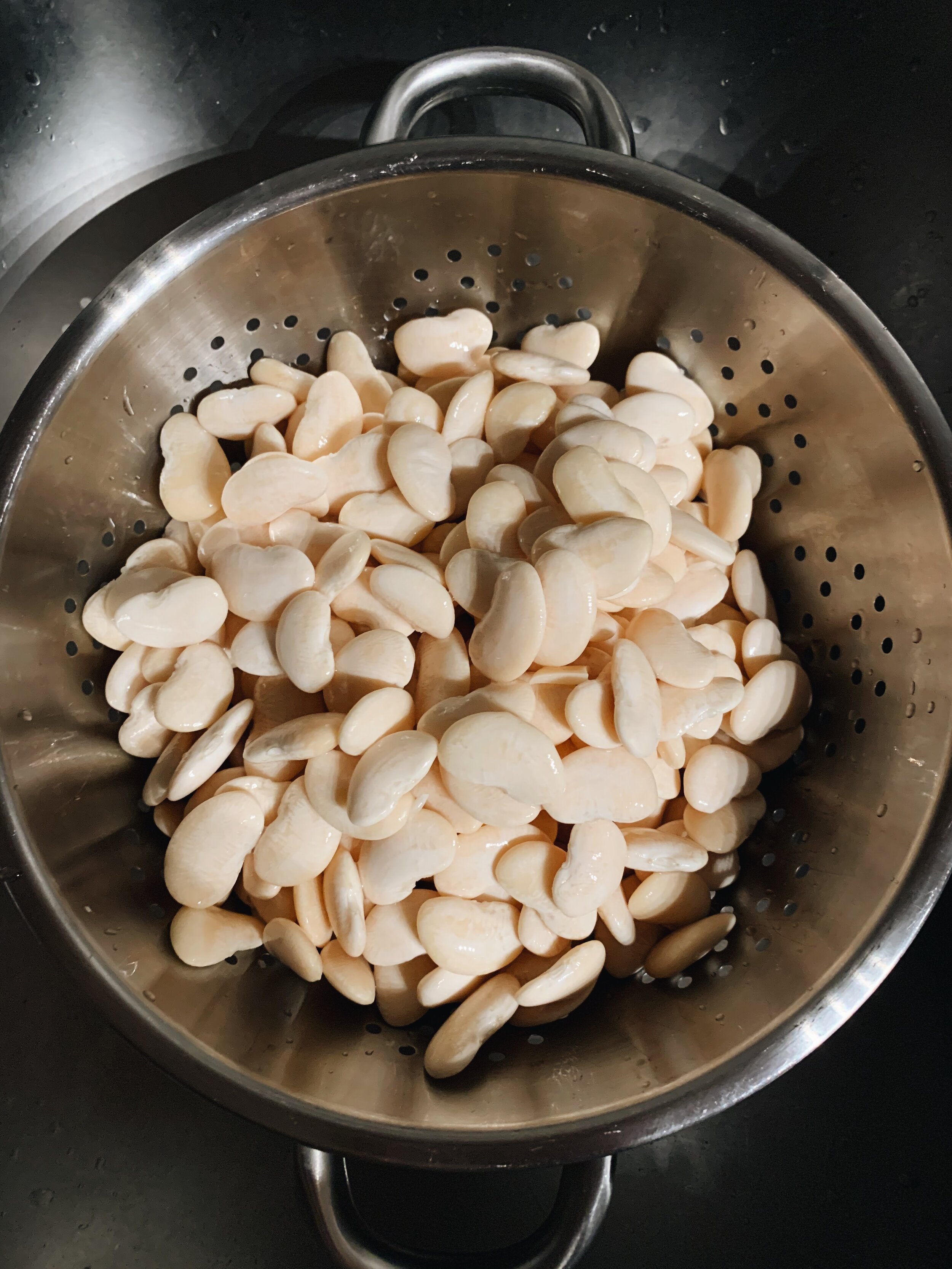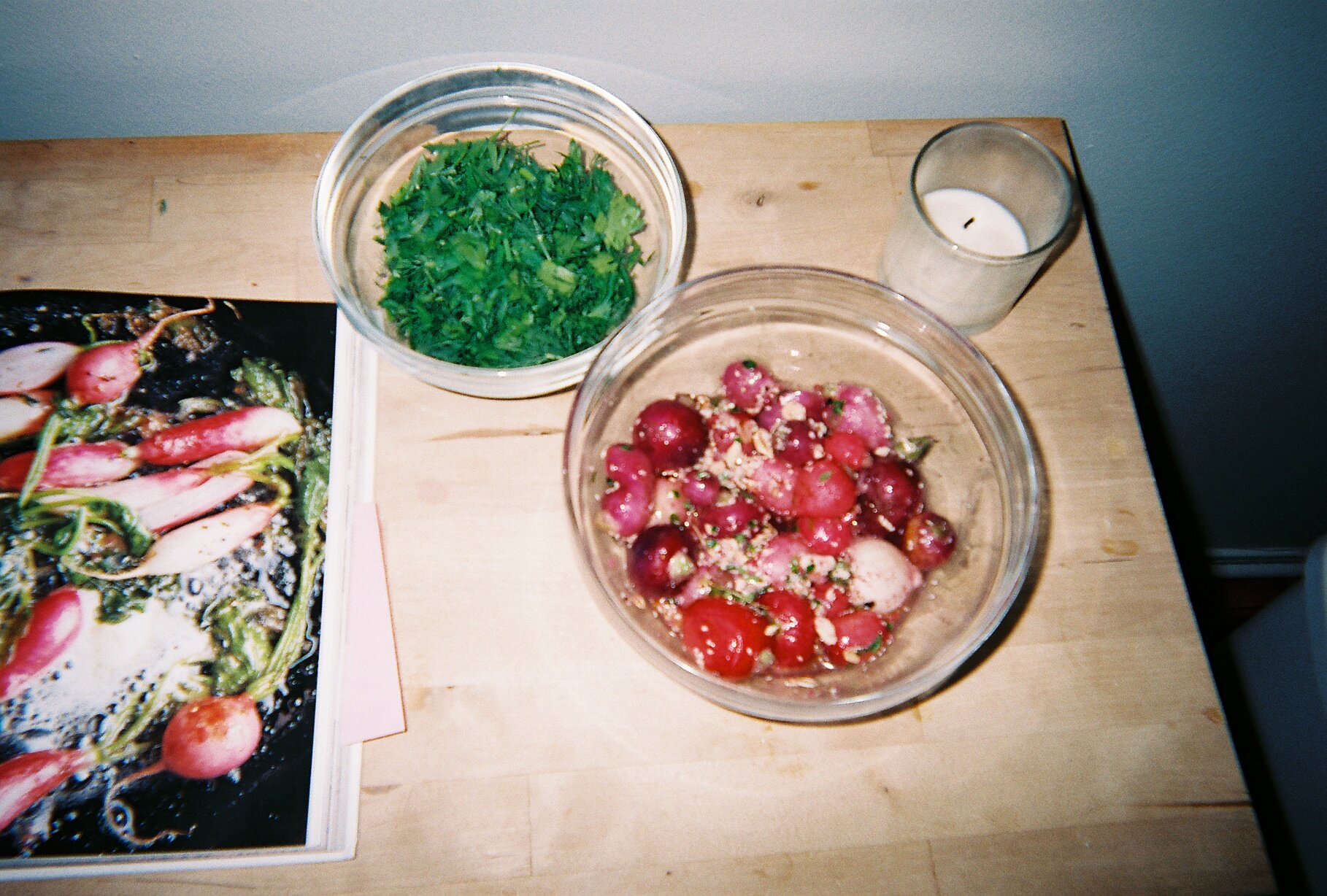I first heard about this recipe from my friend Margaret well over a year ago. She had borrowed nothing fancy from the library and was immediately drawn to this recipe. We share a deep love for sweet potatoes in all forms. So it’s no surprise that this was the inaugural recipe, the gateway to my journey of cooking through Alison Roman’s cookbooks.
The entire recipe concept is basically found in the name. A baked sweet potato, smashed and fried in oil and butter until the skin is dark and crispy, then smothered in fresh herbs, sweet maple syrup, and tangy sour cream & lemon juice, with a sprinkle of flaky sea salt. It has all of the textural and flavor variance you could want in one dish: sweet, salty, sour, creamy, soft, crispy, crunchy.
This recipe doesn’t need any selling, so I’ll just provide a few anecdotes about the ingredients used.
Alison lets you know that small sweet potatoes are best, and she is quite right. Not only do they bake and cool faster, they also fit more easily into one pan for the crisping process and make for a better serving portion. Look for potatoes that are maybe just a tad larger than your palm. I also recommend baking all of the sweet potatoes at once, and storing any extras you know will become leftovers in the refrigerator before crisping in the pan and adding the fixings. That way you can cook them in the butter and oil just before eating, preserving the integrity of the crunchy skin. (Shoutout to Kearci, my nothing fancy benefactor and best friend, for that tip!)
Sour cream alternatives: If you’re like me and can’t have cow’s dairy (sad face), don’t be dismayed - you have options! I subbed the sour cream with Goat’s milk yogurt, which can be found at Trader Joes. Though the yogurt’s consistency is much thinner, it still achieved the creamy sour balance point to the maple syrup that Alison is going for. If cow’s milk doesn’t bother you, but you don’t have sour cream, then plain Greek yogurt will be a fine substitute.
The recipe does call for some toasted buckwheat groats to be sprinkled over the finished potatoes, adding an extra crunch. I’ve never had these before, and didn’t plan well enough ahead to buy them. If you make this with the groats, please tell me all about it! I want to know if they add anything beyond texture.
Finally, a short PSA about flaky sea salt. Until a few short months ago, I was misinformed, and frankly downright naive about the difference between coarse Kosher salt and flaky sea salt. That is to say that I thought they were the same thing. I was gravely mistaken. Unlike coarse Kosher salt, flaky sea salt comes in actual flake (not grain) form, and maintains its structure even after being added to a dish. It provides tiny, delightful, salty bursts that punctuate bites and often linger in the mouth. They are visually lovely too and can make anything you cook appear fancier. It’s a small thing that I take great delight in. (This is the kind I use.)
4 recipes cooked, 221 recipes to go.


